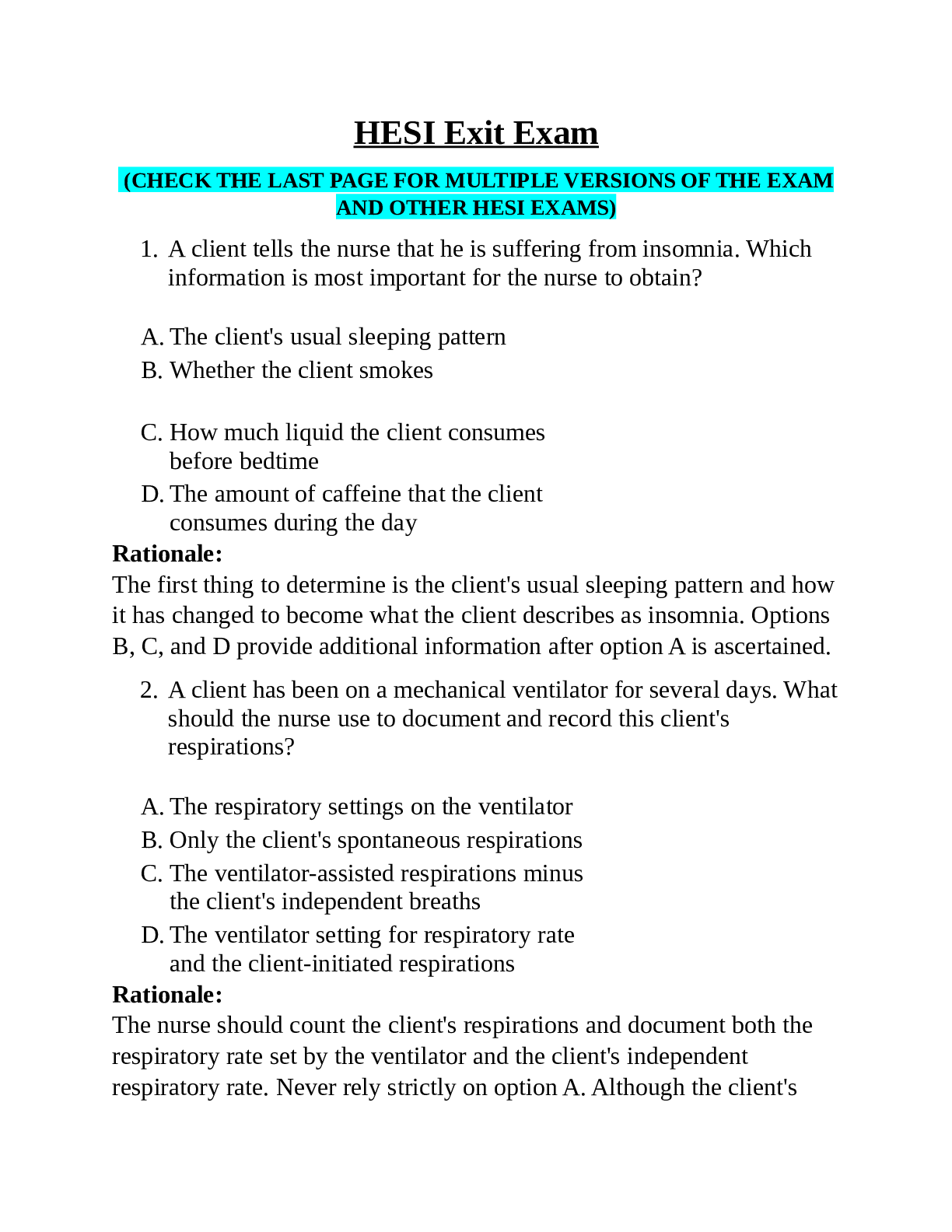HESI Exit Exam
Course
Music
Subject
Chemistry
Category
Exam
Pages
10
Uploaded By
ATIPROS
Preview 1 out of 10 Pages

Download all 10 pages for $ 8.50
Reviews (0)
$8.50
